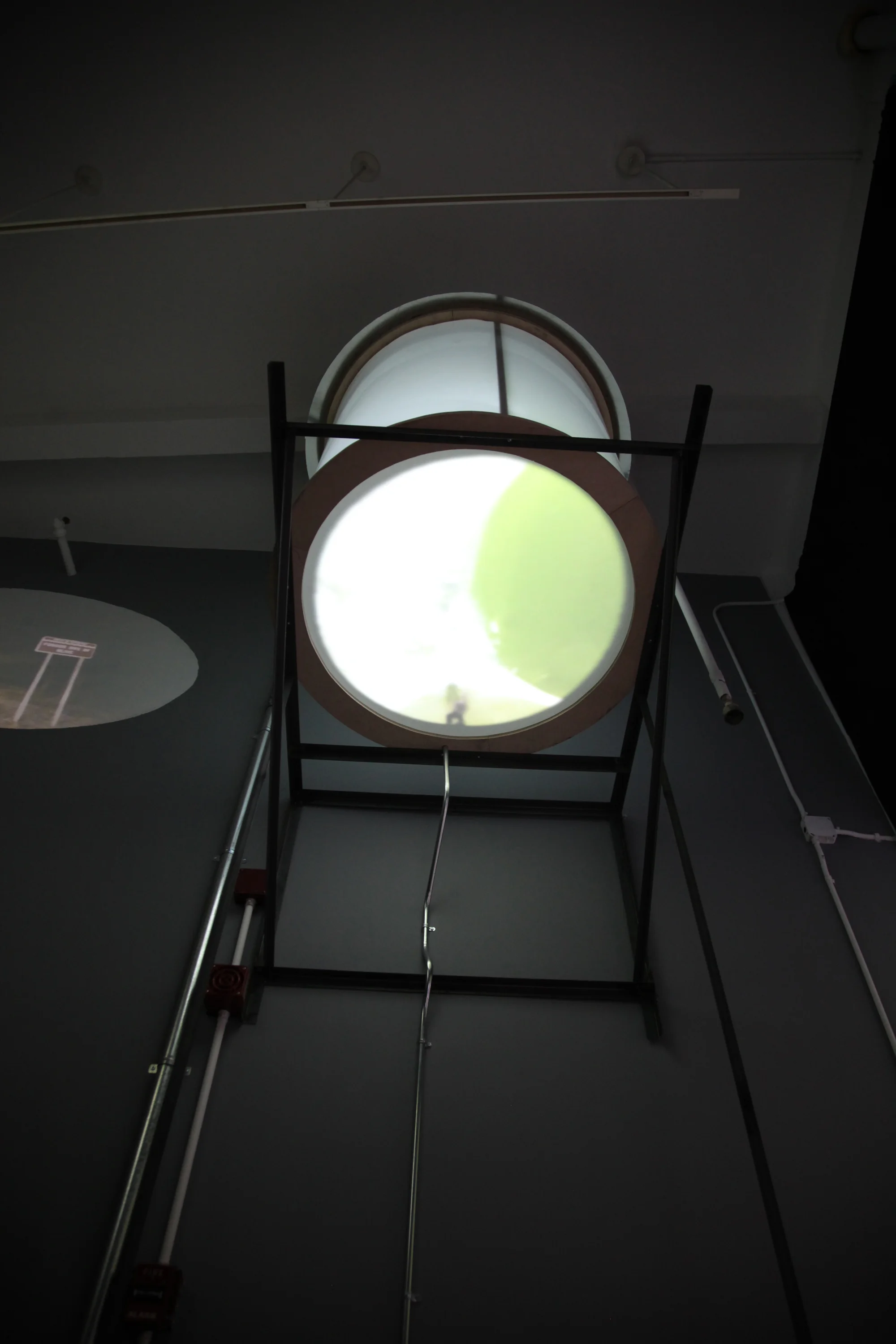MOVING THE WATER(S): ASHOKAN FUGUES, 2014
Solo Exhibition
CUE ART FOUNDATION — New York, New York
Moving the Water(s): Ashokan Fugues is a research-based mixed-media installation that explores the New York City water supply and its relationship to the Catskill Watershed. It is an elegy to the people of the Catskills who lost their land and homes through eminent domain for the building of the Ashokan Reservoir, which supplies drinking water for New York City through its aqueduct system. Using the musical structure of a fugue, the piece is “composed” to be played by a trio of videos projected inside the two water towers and from the one surveyor’s transit. A green ball animates the water currents and becomes the visual thread linking the movement of water from the Catskills down to NYC.
Mixed-media Installation: 15 ft x 13 ft. x 15 ft.
2 water towers, 1 surveyor’s transit, and 3 video projections @ 16 min. continuous loops.
Photo Credits: Installation documentation by Michael Duva; Video stills by Margaret Cogswell
In the dedication ceremony for the completion of the NYC aqueduct system, the mayor of New York City referred to the chief engineer, Waldo Smith, as a magician because his accomplishment of this major engineering feat was considered nothing short of magical. Subsequently, footage of a magician performing tricks with empty cups and green balls appears throughout the multiple channels of video projections in Moving the Water(s): Ashokan Fugues.
Ashokan Video Stills
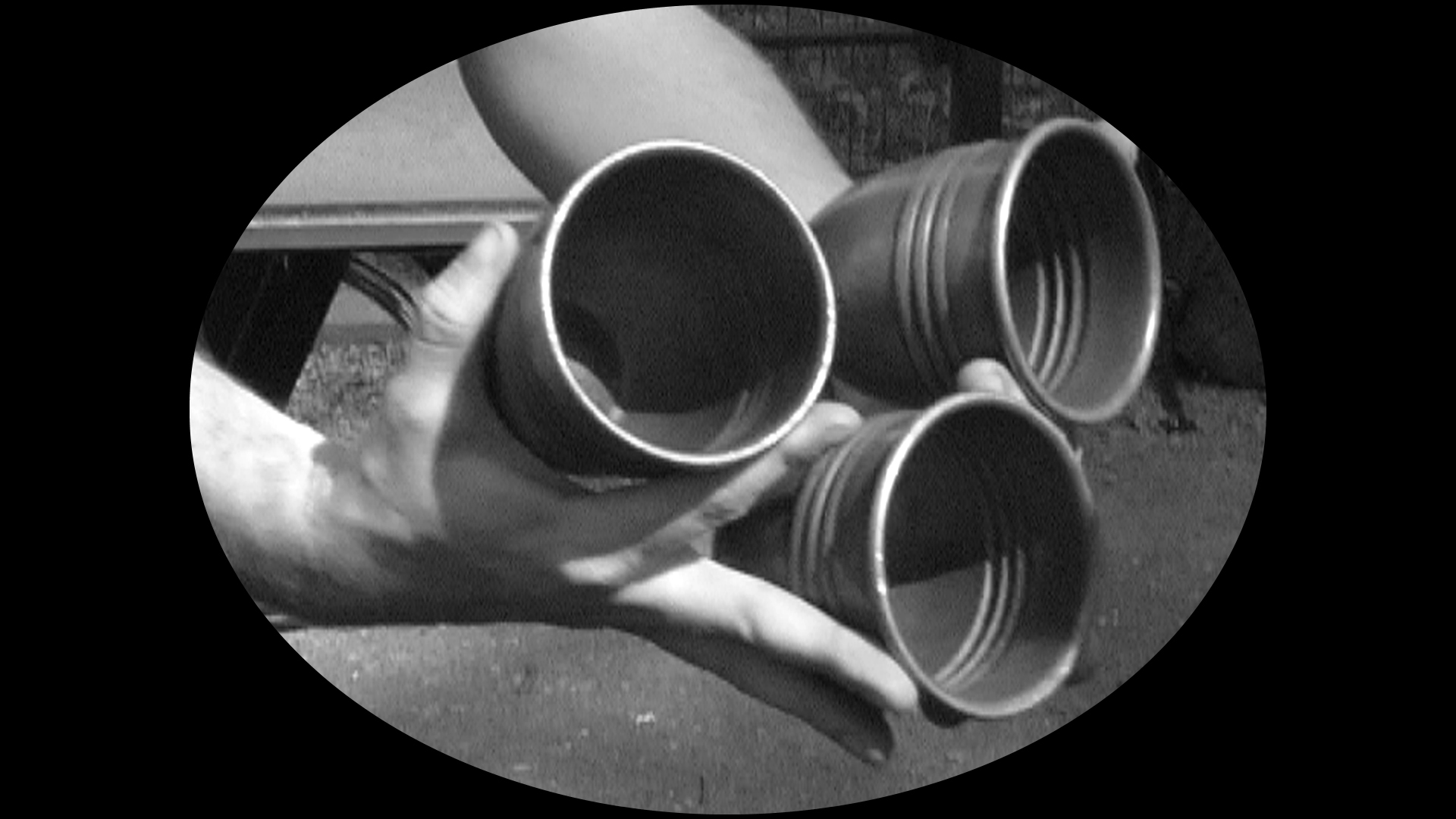
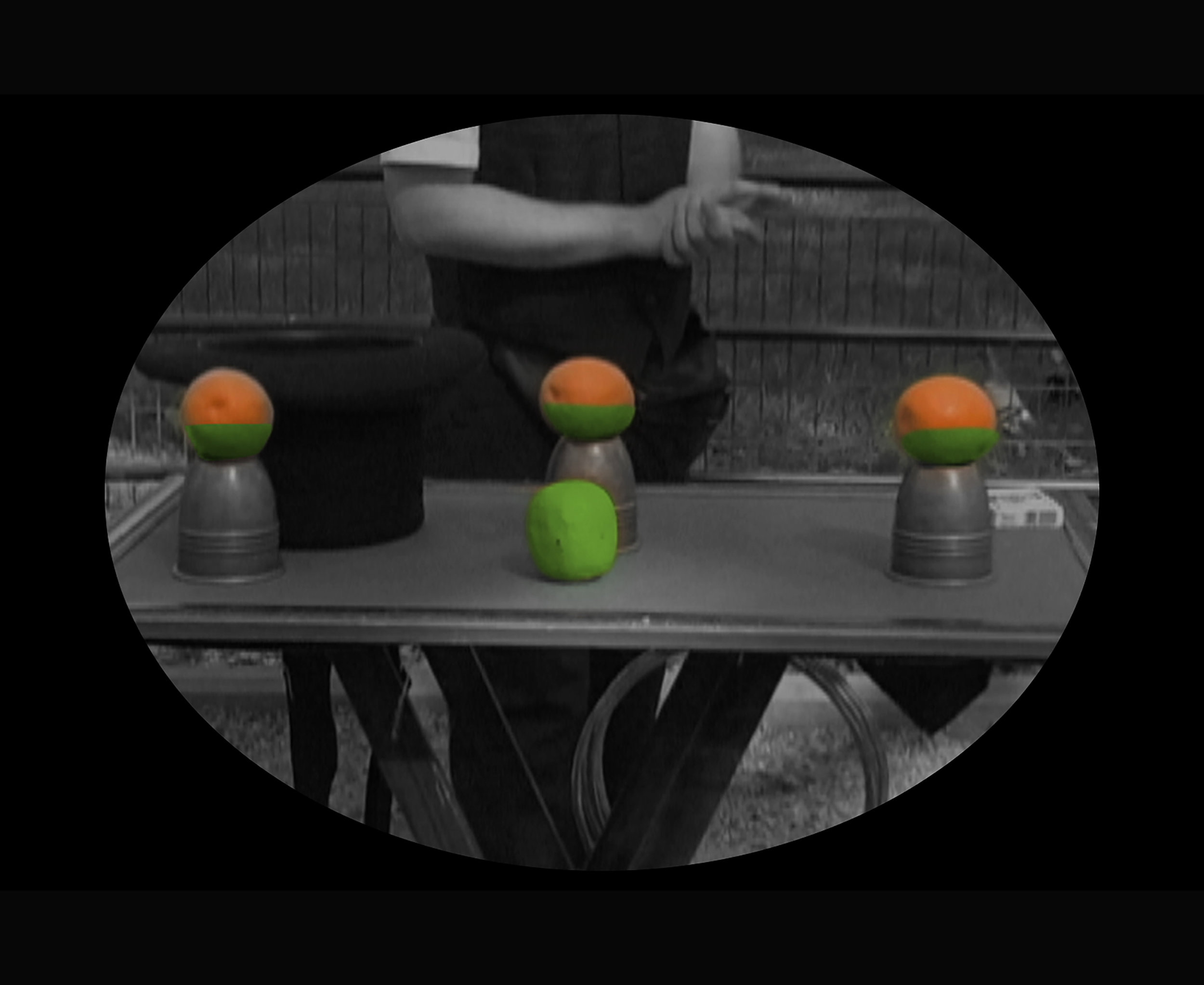

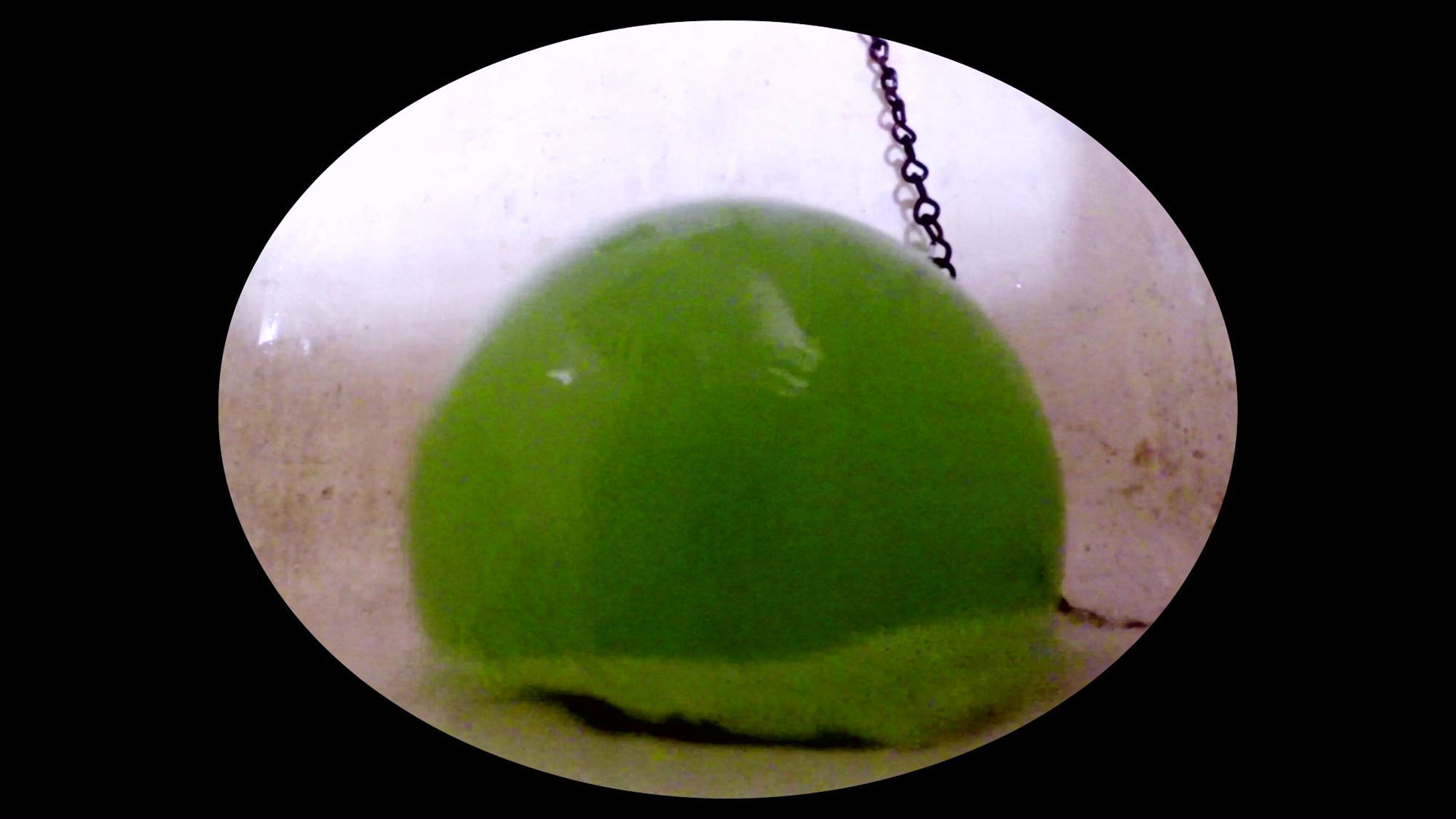
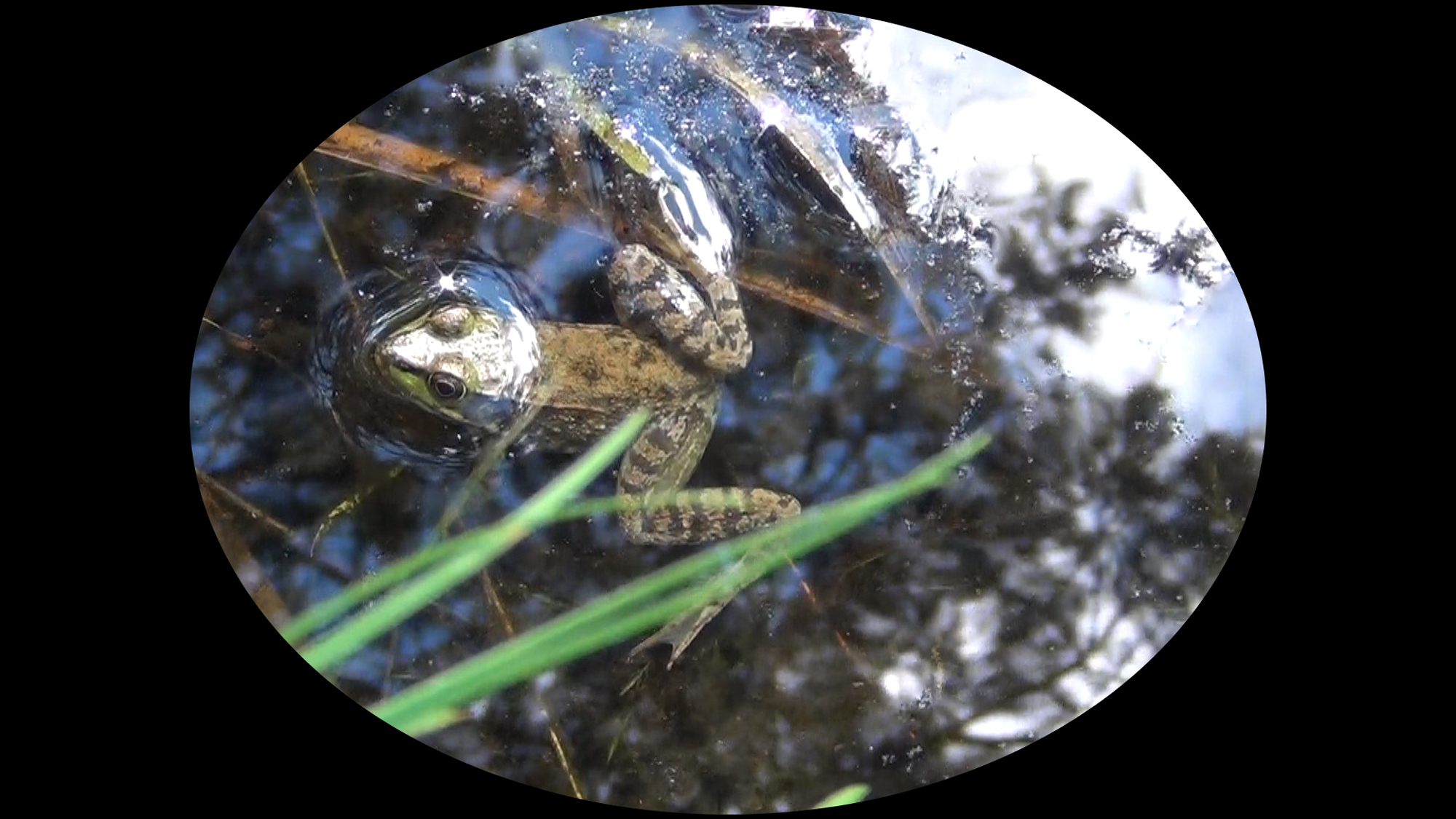
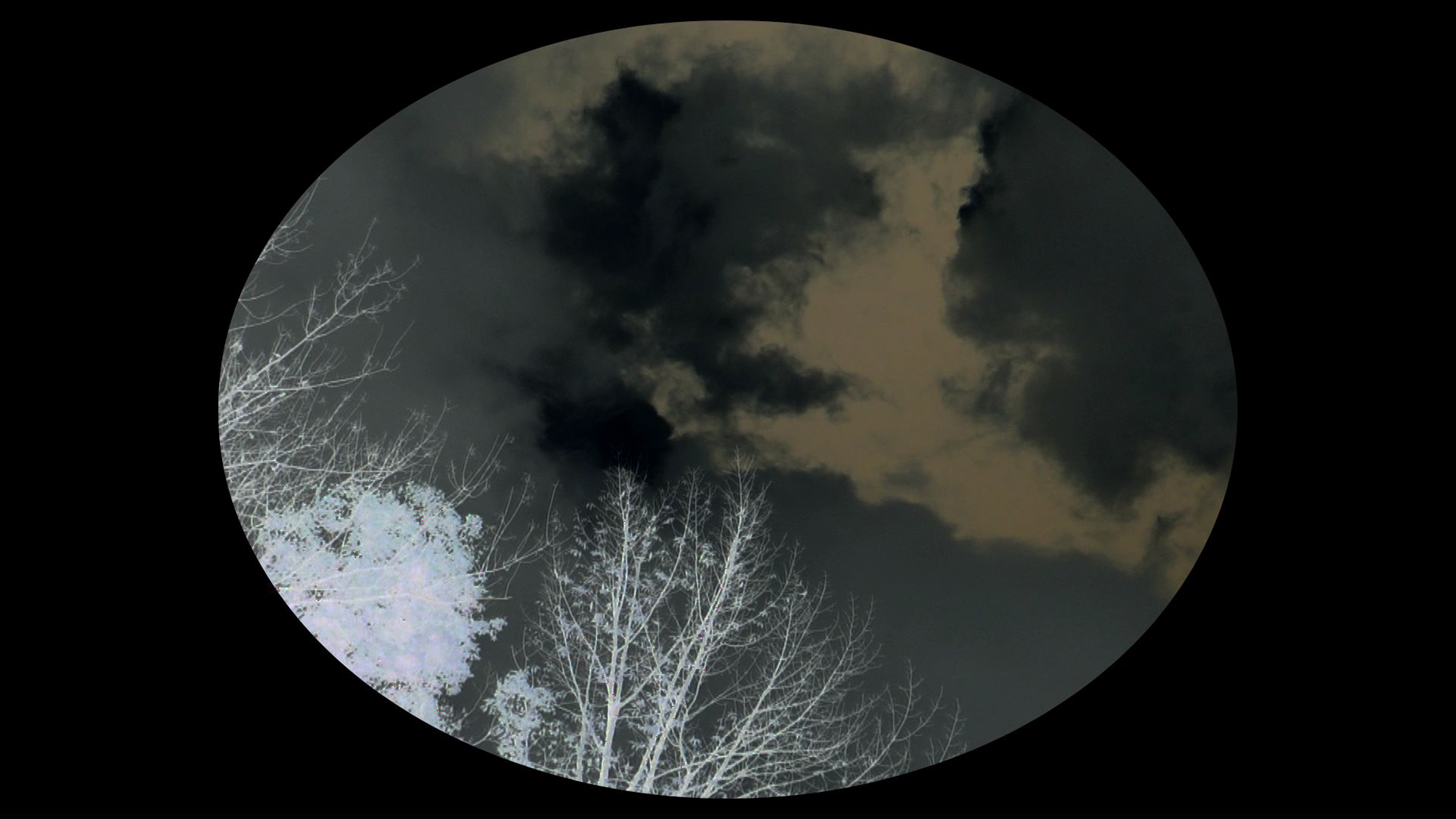
MOVING THE WATER(S): ASHOKAN FUGUES, 2016
Solo Exhibition
KLEINERT/JAMES CENTER FOR THE ARTS — Woodstock, New York
Curated by Jeremy Adams, Director
In 2016, Moving the Water(s): Ashokan Fugues was expanded to incorporate new components for the installation at the Kleinert/James Center for the Arts in Woodstock, New York, just 11 miles from the Ashokan Reservoir and 100 miles north of New York City. In addition to the two water towers, the Woodstock installation included five 24” diameter spiral steel pipes ranging from 8 to 10 feet in height.
Green balls, previously appearing only in the videos, took on a physical manifestation and, along with large black umbrellas, were suspended from the ceiling throughout the installation space. Narrative Fugues, weaving together stories about NYC’s water supply and history collected from people both in NYC and the Catskill Watershed, emerged from portable DVD players embedded in steel boxes on the sides of the steel pipes.
Mixed-media Installation: 2 wall video projections; 2 water towers with rear projected video inside each tower; 5 spiral steel pipes @ 24 In. diameter; 3 portable dvd players with headphones inside steel boxes attached to pipes; green balls and umbrellas. 15 ft. x 25 ft. x 40 ft.
http://www.rollmagazine.com/moving-the-waters-ashokan-fugues/
Parallel Panels
In conjunction with the exhibition in Woodstock, I organized two events which served as a catalyst for bringing together people from New York City and the Catskills to explore the history and current concerns regarding water quality and sustainability in these inextricably linked New York communities.
IS GOOD WATER A COMMON GOOD?
Panelists:
Moderator: Kathleen Nolan, MD, MSL
Rebecca Martin – co-founder of KingstonCitizens.org
Aidan Ferris – co-founder of the first New York Chapter of Earth Guardians
Watch footage from the panel here: Part 1 — Part 2 — Part 3
WE ALL LIVE DOWNSTREAM
Panelists:
Vincent Coluccio – an Environmental Health Specialist and former Interim Chief of New York City Drinking Water Quality
M. Elias Dueker – Assistant Professor of Environmental and Urban Studies, and Biology at Bard College
Diane Galusha — Communications Director and Education Coordinator at Catskill Watershed Corporation, and author of Liquid Assets
ASHOKAN NARRATIVE FUGUES, 2018
For RESERVOIR
The Apple Barn — Callicoon, New York
Curated by Derick Melander
Mixed-media installation: 8 wire buckets, 1 wooden rowboat, 2 video projections with audio.
9 ft. x 16 ft. x 17 ft.
ASHOKAN NARRATIVE FUGUES focuses on loss and the struggle that rural communities face when confronting larger power structures be it corporations or urban communities and their needs. Incorporating narratives from Catskill communities which lost their land by eminent domain to NYC for the building of the Ashokan Reservoir, this piece resonated in the Callicoon area which not only experienced similar displacement for the building of other NYC reservoirs, but also loss of livelihood later when their dairy farms were forced to close.
MOVING THE WATER(S): ASHOKAN FUGUES, 2018
Solo Exhibition
ART LAB GALLERY, COLUMBUS STATE UNIVERSITY Columbus, Georgia
Curated by Hannah Israel, Gallery Director
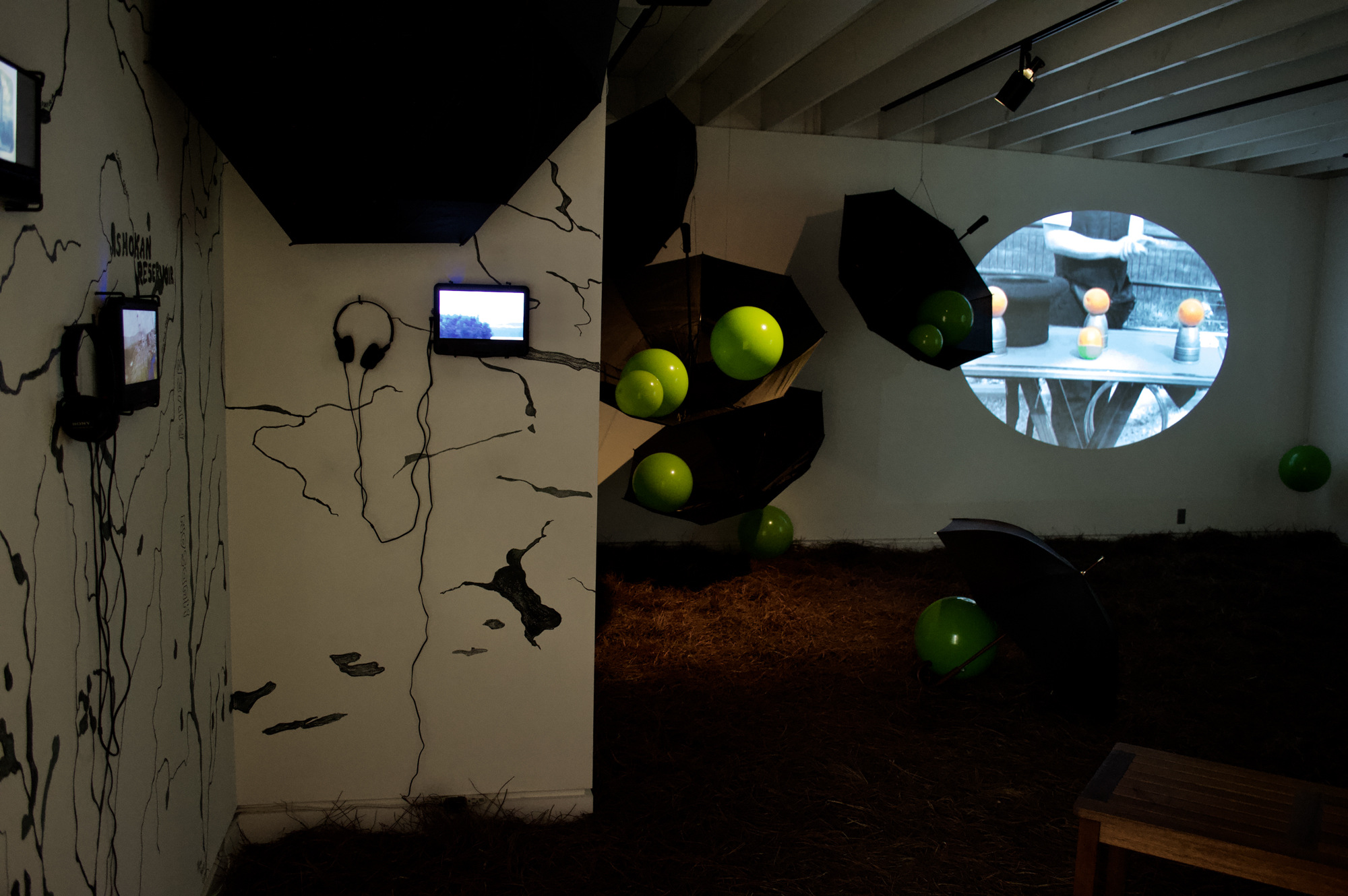
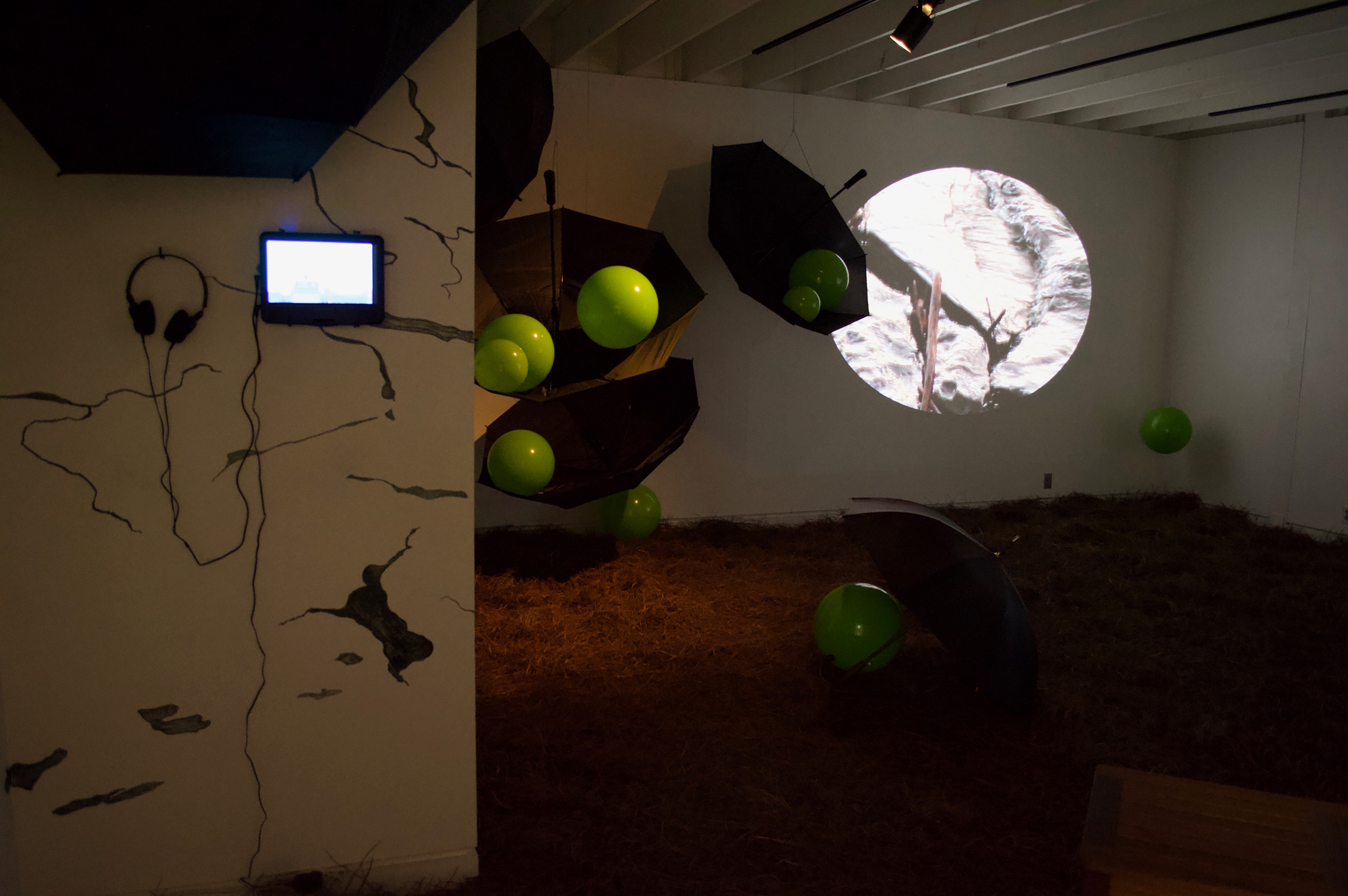
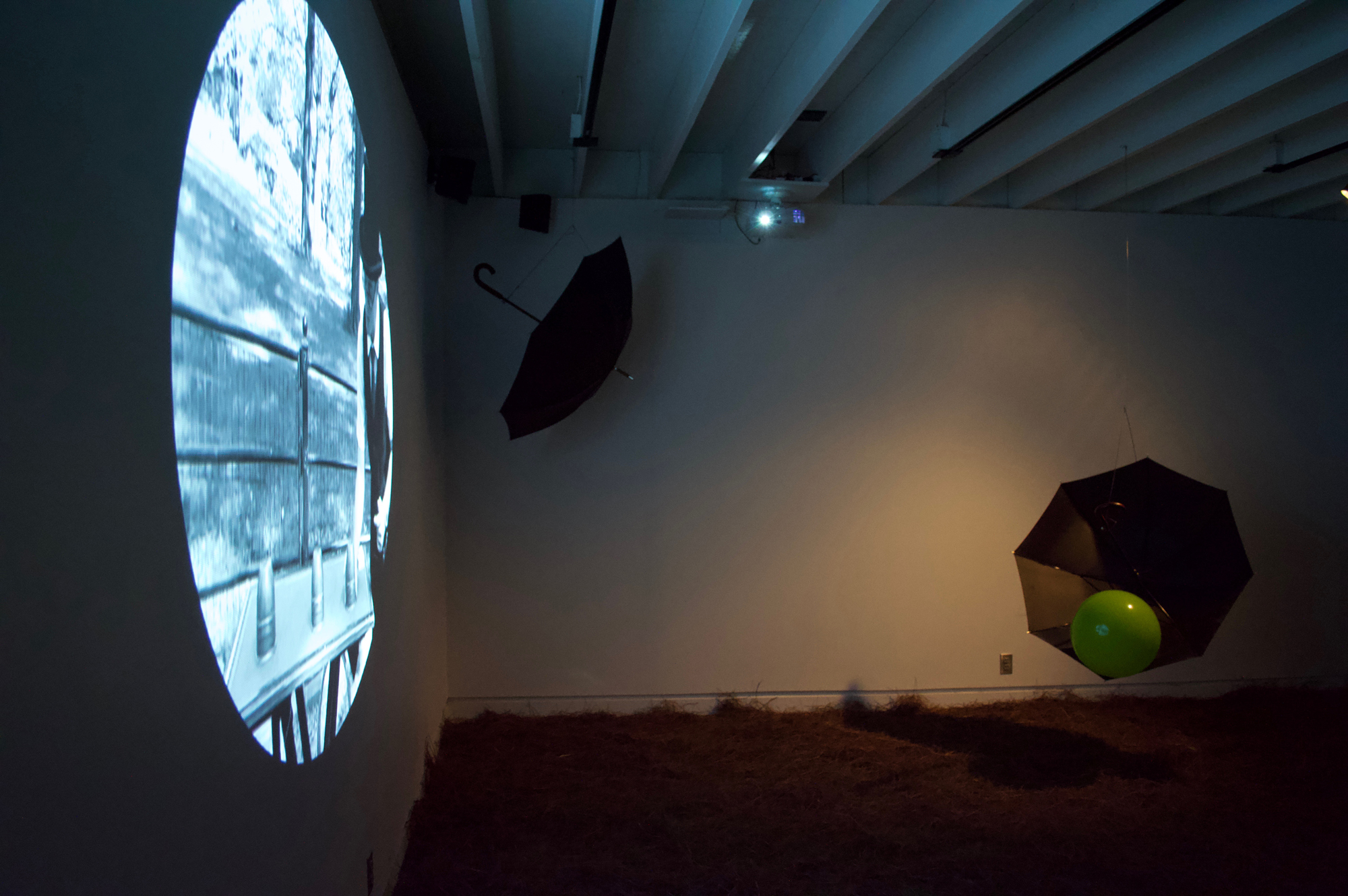
Mixed-media Installation: 2 video projections with audio, 3 portable DVD players with headphones, umbrellas, green beach balls, and pine straw. 9 ft. x 19 ft. x 22 ft.
Although the impetus for Ashokan Fugues came from the Ashokan Reservoir near my studio in upstate New York, access to clean water is just as relevant in Columbus, Georgia, next to the Chattahoochee River. In this rendering of the installation, green balls and black umbrellas dominate the physical space countering two walls of “video fugues.” “Narrative fugues” emerge from 3 DVD players installed amid wall drawings mapping New York state’s rivers. Local pine straw covers the floor, linking the landscape of Columbus, Georgia, to the forests around the Ashokan Reservoir.
MOVING THE WATER(S): ASHOKAN FUGUES, 2019
SOLO EXHIBITION
Madelon Powers Art Gallery, East Stroudsburg University — East Stroudsburg, Pennsylvania
Curated by gallery director/curator Joni Oye-Benintende
Mixed-media Installation: 3 video projections with audio; 1 rowboat; 5 video monitors with headphones; wire buckets, umbrellas beach balls. 30 ft. x 30 ft. x 25 ft.
The installation of Ashokan Fugues was adapted to the site of the Madelon Powers Art Gallery and featured one of the Ashokan narrative fugues created from stories focusing on access to water and displacement through eminent domain collected from people both in NYC and West Shokan. These narratives paralleled the legendary controversy in the Delaware Water Gap around the Tocks Island Dam. Green balls and black umbrellas dominate the three-story atrium space countering three wall and floor videos. On the floor below, a NYC reservoir system regulation size aluminum rowboat appears to be floating into the video projections of the reservoir’s waters.
The exhibition also included two new East Stroudsburg Narrative Fugues developed from interviews with environmental leaders, lawyers, scientists, and other concerned citizens in the area. These were installed on monitors alongside drawings and videos from Wyoming River Fugues and Zhujiajiao River Poems, linking the shared concerns regarding displacement, water rights, access to clean water, extraction industries and related water issues.



